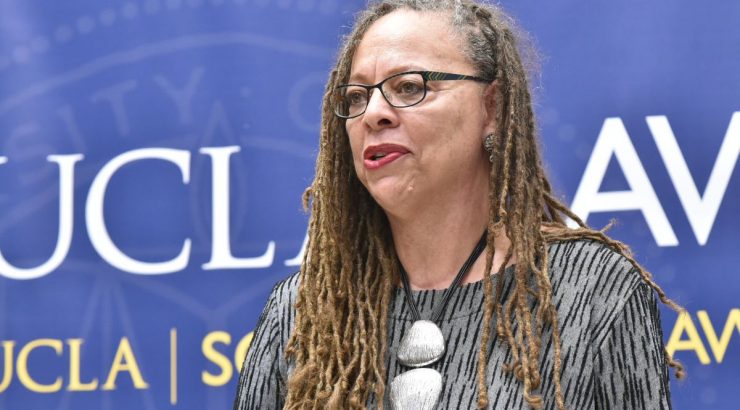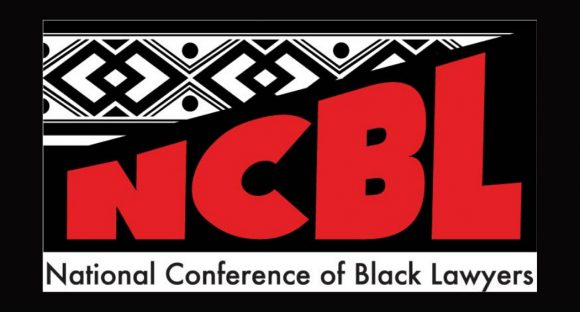
Cheryl I. Harris on the Union of Law, Civil Rights Activism, and Human Rights Work
November 6, 2020
As an expert in the intersection between civil rights law and critical race theory, U.C.L.A. law professor Cheryl I. Harris knows a thing or two about issues regarding race and equality, racial identity, and how racialized thinking frames our understanding and interpretation of the law. At the end of October, Wilkinson College, The Fowler School of Law, and the Black Law Students Association joined together to host an invigorating discussion with Dr. Harris. The virtual event, which drew over 175 viewers, was the latest in Wilkinson College’s Engaging the World: Leading the Conversation on the Significance of Race and the Law School’s Chapman Dialogue Series.
Harris is the Rosalinde and Arthur Gilbert Professor in Civil Rights and Civil Liberties at UCLA Law School. Before becoming a law professor, she served as a senior legal advisor in the City Attorney’s office as part of the reform administration of Mayor Harold Washington, the city’s first Black American major who was elected in 1983.
“It really was a pivotal moment in black politics, as it turns out, in national politics. He [Harold Washington] came in promising reform. He wanted to install ethics accountability, transparency, these are all words that were unknown [at the time in Chicago],” said Harris.
 It was during her time while working in Chicago where she learned about the fight for U.S. support for the Apartheid Government, a system for keeping white people and nonwhites separated in South Africa. People were working at the local and state level to implement divestment legislation to force a change in policy, and that’s when Harris became a part of the National Conference of Black Lawyers, a group deeply involved in the Anti-Apartheid movement.
It was during her time while working in Chicago where she learned about the fight for U.S. support for the Apartheid Government, a system for keeping white people and nonwhites separated in South Africa. People were working at the local and state level to implement divestment legislation to force a change in policy, and that’s when Harris became a part of the National Conference of Black Lawyers, a group deeply involved in the Anti-Apartheid movement.
“What I learned as I continued to work [with NCBL] was the deep connections between domestic racial subordination, the ways in which my community had been suppressed for years and the way in which white supremacy operated at the global level. And it turned out, what was really interesting to me, is that some of the same arguments were turning up in both places. That is to say, some of the same arguments against majority [Black] rule in South Africa [were] ….not why it was going to endanger the economy. It was going to endanger whites. Whites were going to be the victims of reverse racism, some of those arguments were turning up domestically over questions of affirmative action and the like.”
In 1993, Harris wrote an article for the Harvard Law Review, Whiteness as Property in which she examined how whiteness, initially constructed as a form of racial identity, evolved alongside American conceptualizations of property to exclude people of color, bringing to light how these racist roots are protected in contemporary American law. This seminal piece highlighted the application of vital critical race theory.
What is Critical Race Theory?
“It stands for a radical critique of the interface between line racism. There’s kind of a standard account of law and its relationship to races. Slavery existed in the United States, but it was always with the idea of the United States [as a] democratic society that was open to everybody that promised liberty and justice for all,” said Harris.
Changes in law have helped bring racial progress. However, the role of the law, both historically and in the present is not race-neutral.
Critical Race Theory jumped into the public eye this year with President Trumps’ recent Executive Order on Combatting Race and Sex Stereotyping to combat offensive and anti-American race and sex stereotyping that includes a directive that all federal agencies and contractors receiving federal monies must stop anti-bias trainings that rely on the insights of critical race theory.
“The late Thurgood Marshall, the first black Supreme Court Justice, said in an essay that he wrote at the time of the Bicentennial of the Constitution. ‘Blacks were enslaved by law and emancipated by law,’ and it’s that contradiction, that way in which the law works on both sides that critical race theory is trying to get at. In that way, we see that race is not just a part of civil rights law, race is a part of property law, it’s a part of tort law [civil cases that redress loss or harm], it’s a part of remedies,” she said.
Hear more on the discussion of The Value of Whiteness: Property, Housing, Identity with Dr. Cheryl Harris. Make sure you have the access passcode: F0wl3rL4w!


